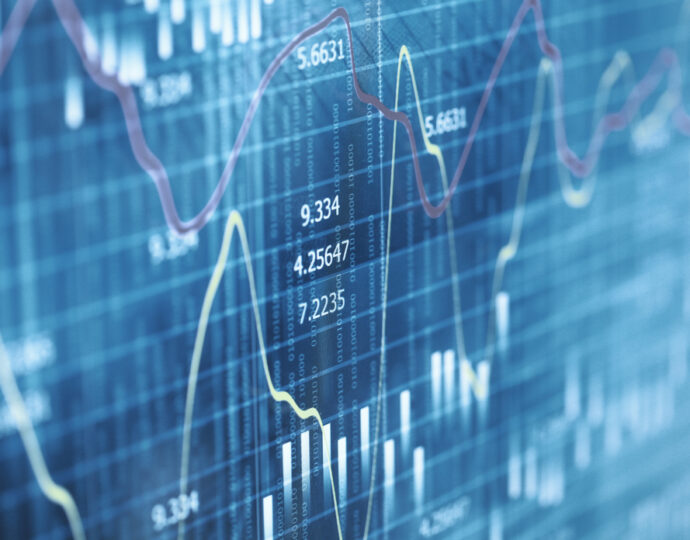19 February 2024
Bill Gross, the most famous bond investor of modern times, used to say that “bonds will always be needed, and not just by insurance companies and pension funds but by aging boomers too.” He was right. Since the GFC, the hunt for yield has picked up pace, driven by ageing investors trying to secure regular cash flow in retirement.
Portfolio theory, as any financial planner will tell you, recommends that you have the right balance of stocks, bonds and cash that suits your overall risk tolerance. The foundational 60/40 portfolio, where 60% is invested in stocks and 40% in bonds, is the initial starting point for many portfolios. It tends to work well.
When stocks go down, bonds go up, and vice-a-versa, with few exceptions such as 2018 and 2022. When you are young, you have more equities. As you age, the proportion of fixed income products in your portfolio goes up.
Traditionally, there were two ways for an Australian to invest in fixed income securities. He or she could invest directly into a listed bond, or he or she could invest through a fund. Both had pros and cons.
Direct Investment
Investing directly naturally meant you could choose the bonds to invest in yourself and determine your risk/reward profile to complement existing investments. Funds would be returned to you at maturity and interest would be known as would the payment date be.
But investing directly into listed bonds can be tricky. One issue is choice. There are many different types of bonds with different intrinsic risks. It’s not an easy exercise for the average person to navigate fixed income listed products, not to mention come up with the high minimum investments needed if you plan to buy in the OTC market.
Investing in Bond Funds
Mutual funds took away some of those headaches. Funds would often require lower minimum investment amounts to invest compared to an OTC portfolio. The fund would also hold hundreds or thousands of bonds, which provided diversity in one investment.
Unfortunately, mutual funds were not perfect. You often paid high fees for the expertise of the manager, which eat into performance. And of course, you were effectively handing over your decision making to a third party, who often wasn’t too forthcoming explaining the fund’s underlying investments.
The Emergence of Bond ETFs
ETFs have taken market share away from mutual funds not only when it comes to equities, but the trend has been also noteworthy with fixed income. Globally, bond ETFs have grown quickly. According to Blackrock, fixed income ETFs globally manage approximately USD$1.5 trillion in AUM and they expect this figure to nearly double to USD$2.8 trillion by 2025 and hit USD$5 trillion in 2030. This growth has persisted even in the face of mounting inflation and hawkish central banks around the world.
Bond ETFs in Australia have seen substantial growth over the past few years too, growing at a rate of 42% per year to circa AUD$20 billion and now make up approximately 12% of the overall ETF market. Australian bond ETFs recorded inflows of $3.81 billion in 2023.
A Popular product
In recent years, bond ETFs have become a popular product for investors, who want to invest in fixed income. They have distinct advantages compared to bond mutual funds:
- Convenience and Liquidity: Bond ETFs are easy to buy and sell, providing investors with the ability to quickly adjust their portfolios.
- Reliable Returns: Bonds are known for their steady income generation, making them an attractive investment for those seeking regular returns.
- Diversification: Bond ETFs offer exposure to a wide range of bonds, allowing investors to diversify their portfolios more effectively than by holding individual bonds.
- Protection Against Market Volatility: Quality bonds are seen as a safe haven during turbulent conditions.
- Attractive yields: With the recent spike in the RBA cash rate to 4.35%, bond ETF yields are up. Corporate bonds can be found offering in excess of 5% and similarly there are high yield bonds offering in excess of 8%, making them more attractive to investors.
- Lower Costs: Bond ETFs generally have lower fees compared to other mutual fund peers.
Active vs Passive ETF
With the continued evolution of ETFs, investors are now treated to more choice than ever before. Both have compelling advantages.
Passive Bond ETFs, seek to track an index and would generally be expected to return around the same amount (before fees and expenses). Passive ETFs benefit from:
- Competitive fees: Passive funds generally have lower fees given their ‘passive investment approach’ tracking to an index, and
- Increased transparency: Passive fund publish holdings on a daily basis.
Active Bond ETFs on the other hand are actively managed with the explicit aim of outperforming a benchmark (before fees and expenses). Active ETFs benefit from:
- Flexibility: fund managers have greater choice in investment products, instrument types and frequency of investment changes to name a few.
- Increased number of strategies: Given the flexibility and instrument choices, Active managers have the ability to be selective with the products and timings of investments through cycles.
Depending on the investor’s objectives, both Active and Passive Fixed Income ETFs are available through the ease of an exchange traded fund.
Below are a sample of Active & Passive Fixed Income ETFs listed in Australia for both domestic and international exposures:
- iShares Core Composite Bond ETF (IAF) is a passive ETF invests in a diversified portfolio of Australian fixed income securities, including government, semi-government and corporate bonds. MER 0.13% pa.
- VanEck Australian Subordinated Debt ETF (SUBD) is a passive ETF that aims to provide investment returns (before fees) which track the performance of the iBoxx AUD Investment Grade Subordinated Debt Index. MER 0.29% pa.
- Global X US Treasury Bond ETF (USTB) is a passive ETFs that aims to provide investors with a return that (before fees) tracks the performance of the iBoxx $Treasuries Index (AUD Hedged). MER 0.19% pa.
- Russell Australian Select Corporate Bond ETF (RCB) is a passive ETF that aims to provide a total return before costs and tax, in line with the DBIQ 0-4 Year Investment Grade Australian Corporate Bond Index. MER 0.28% pa.
- Schroder Absolute Return Income ETF (PAYS) is an actively managed ETF targeting returns of 2.5%p.a (before tax and fees) above RBA Cash rate over rolling 3-year periods. MER 0.55% pa.
- Janus Henderson Tactical Income Active ETF (TACT) is an actively managed ETF investing in a diversified portfolio of predominantly Australian income producing assets. Benchmark: 50% BBG AUB Bank Bill & 50% BBG AUB Comp 0+Y. MER 0.45% pa.
- Macquarie Dynamic Bond Active ETF Managed Fund (MQDB) is an actively managed ETF aiming to generate attractive returns. The Fund invests between 0-100% of it’s assets in sovereign bonds, between 0-70% in investment grade credit, and between 0-20% in high yield and/or emerging markets debt instruments. MER 0.614% pa.
Disclaimer: Nine Mile Financial Pty. Limited “Nine Mile” is a market maker licensed by ASIC to conduct investment activity on its own account. This communication and all information contained herein does not constitute investment advice, investment research, financial analysis, or constitute any activity other than dealing on our own account. Before making an investment decision you should consider the relevant Product Disclosure Statements and obtain financial advice.



